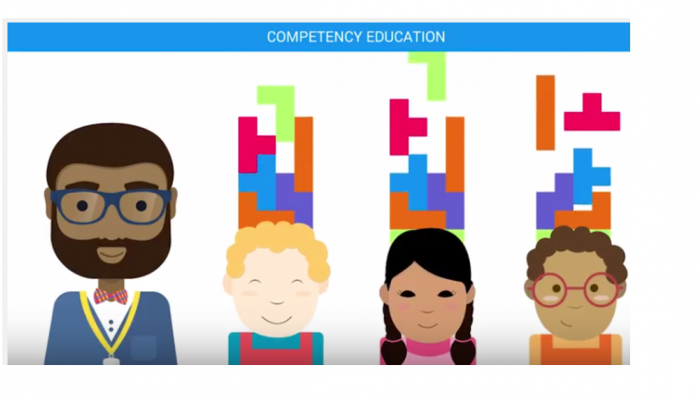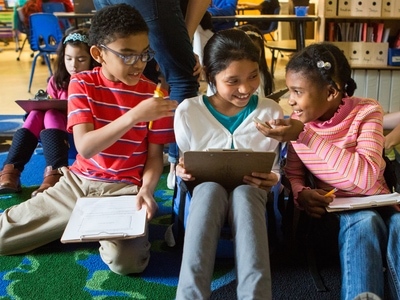New Designs for School
Moving at Your Own Pace
Topics

We’ve all had the experience of truly purposeful, authentic learning and know how valuable it is. Educators are taking the best of what we know about learning, student support, effective instruction, and interpersonal skill-building to completely reimagine schools so that students experience that kind of purposeful learning all day, every day.
Practitioner's Guide to Next Gen Learning
Get the evidence behind “moving at your own pace” and examples of this instructional move in practice.
A key instructional move that underlies most personalized learning models is moving at your own pace. Watch how KnowledgeWorks describes the foundation of this instructional move:
“Moving at your own pace” means that students in the same social grouping (often grouped by age, grade, etc.) do not advance through material at the same rate. Rather, students move forward at a rate or pace that is best-suited for each child to allow for maximal learning and mastery of content.
Tom Gaffey, from Building 21 in Philadelphia, describes it this way:
“Self-paced doesn’t mean do work when you want! Self-paced means that a student’s progress is constrained by growth and performance over time rather than strictly by time itself.”
Here are a few common components to the instructional move, often referred to as “competency-based education:”
- Educators must spend time up front creating a clear continuum of competencies to master.
- It must be clear to students how to progress from one competency to the next.
- Often (but not always), moving at your own pace is enabled by technology tools that allow students and teachers to monitor progress.
- Educators are responsible for monitoring progress, intervening when necessary, and helping students set goals around pace.
The Evidence Behind Moving at Your Own Pace
- What the Learning Sciences Tell Us About Competency Education, a blog on CompetencyWorks, summarizes learning science research and how it applies to competency-based education
- Research Evidence: Proficiency-Based Learning Simplified, an annotated bibliography from Great Schools Partnership of 100 research studies that underlie the entire model of proficiency-based learning (similar to competency-based education)
- Why Don’t Students Like School, a popular book by Daniel Willingham
- Looking Under the Hood of Competency-Based Education, a Nellie Mae Education Foundation study conducted by the American Institutes for Research (AIR) on the impact of competency-based education on student skills and dispositions
Moving at Your Own Pace in Practice
Building 21 has been a leader in the field of competency-based education with the development of a platform, powered by Slate, that enables students to progress at their own pace. They have documented their approach in their competency-based handbook. And they created this video to explain “moving at your own pace” to parents.

Student dashboards show students at B21 how they are progressing along competencies
Matchbook Learning in New Jersey and Michigan shares Slate’s backend. The network has developed the front end, called Spark, to align with its instructional model. The four components of Matchbook’s instructional model include: 1) Learn and Practice; 2) Conference; 3) Apply; and 4) Assess. Students advance through each step at their own pace.

Additional Resources
- Article: Social Learning & CBE – Competency Education is a Team Sport by Nora Priest on CompetencyWorks.
- Twitter: #CompetencyEd and #CBE - View conversations or add your voice and join in.
- Blog: The End of the Big Test: Moving to Competency-Based Policy - This post by Tom Vander Ark suggests the use of assessment pilots and innovation zones where groups of schools apply and become authorized to operate alternative assessment systems.
- Website: CompetencyWorks - This website includes articles, webinars, and a wealth of resources about “moving at your own pace.”




